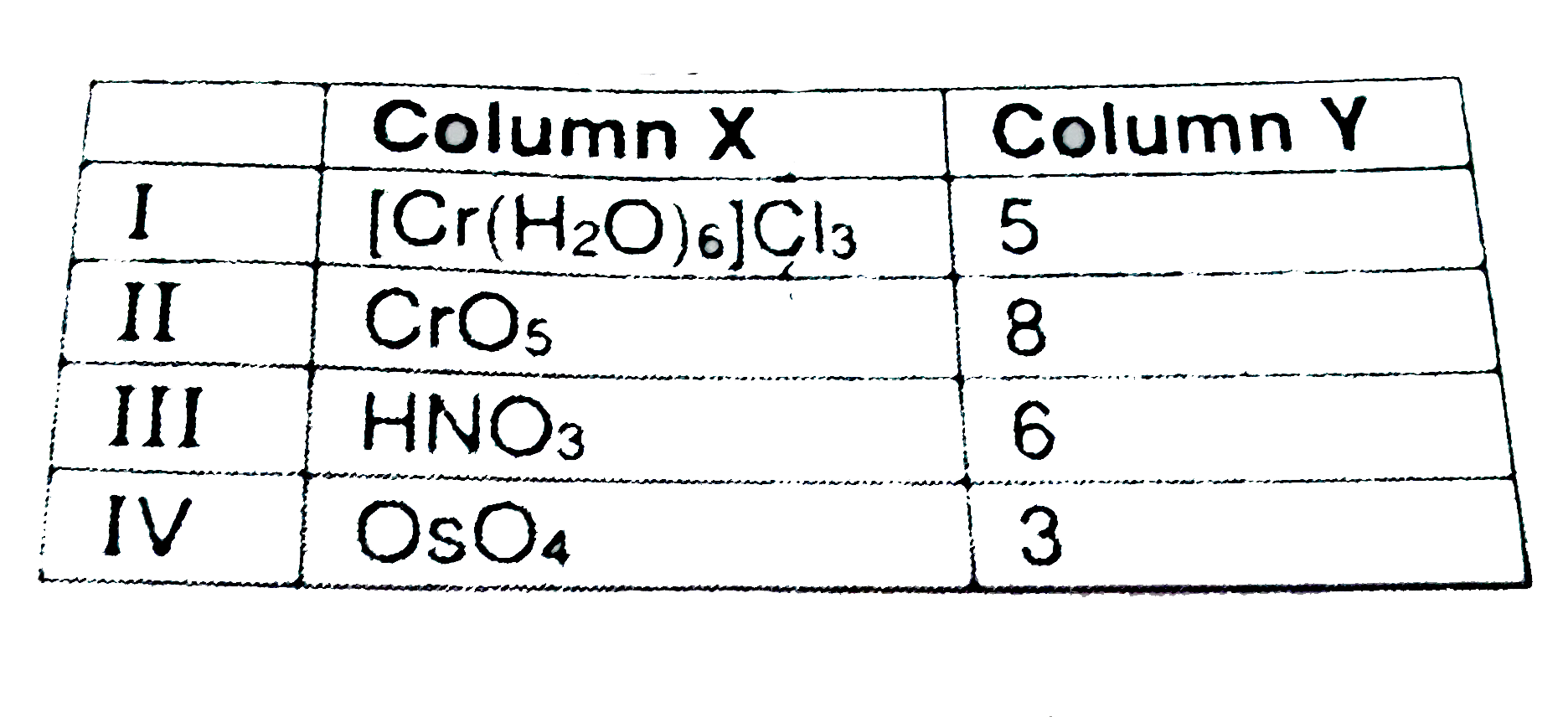XeF6 on reaction with SiO2 gives a xenon compound X what is the oxidation state of Xe in X?
+2
+4
+6
0
The correct Answer is:C
Step by step video solution for XeF_6 on reaction with SiO_2 gives a xenon compound X what is the oxidation state of Xe in X? by Chemistry experts to help you in doubts & scoring excellent marks in Class 12 exams.
Updated on:21/07/2023Topper's Solved these Questions
- TEST PAPERSBOOK - ALLENCHAPTER - TEST PAPERSEXERCISE - CHEMISTRY
25 Videos
- TEST PAPERSBOOK - ALLENCHAPTER - TEST PAPERSEXERCISE - MATHEMATICS
2 Videos
- TEST PAPERSBOOK - ALLENCHAPTER - TEST PAPERSEXERCISE - part-2 Chemisty
18 Videos
- TEST PAPER 4BOOK - ALLENCHAPTER - TEST PAPER 4EXERCISE - CHEMISTRY
45 Videos
- THERMODYNAMICS BOOK - ALLENCHAPTER - THERMODYNAMICS EXERCISE - EXERCISE -4
18 Videos
Similar Questions
Knowledge Check
One mole of N2H4 loses ten moles of electrons to form a new compound A. Assuming that all the nitrogen appears in the new compound, what is the oxidation state of nitrogen in A? (There is no change in the oxidation state of hydrogen.)
A−1B−3C+3D+5
What is the oxidation number of Xe in XeOF2?
View SolutionXenon hexafluoride react with silica to form a xenon compound (X). The oxidation state of Xe in (X) is
View Solution2 mole of N2H4 loses 16 mole of electron is beings converted to a new compound X. Assuming that all of the N appears in the new compound. What is the oxidation state of 'N' in X ?
View Solution2 mole of N2H4 loses 16 mole of electron is being converted to a new compound X. Assuming that all of the N appears in the new compound. What is the oxidation state of 'N' in X ?
View SolutionXeF4 disproportionates in water giving reduced and oxidised products What is the ratio of oxidation states of Xe in the reduced and the oxidised products:
View SolutionMatch the compounds of column X with oxidation state of central atom in column Y.
 .
.
View SolutionSulphur reacts with chlorine in 1:2 ratio and forms X hydrolysis of X gives a sulphure compound Y. What is the hybridisation state od central atom in the compound?
View Solution
